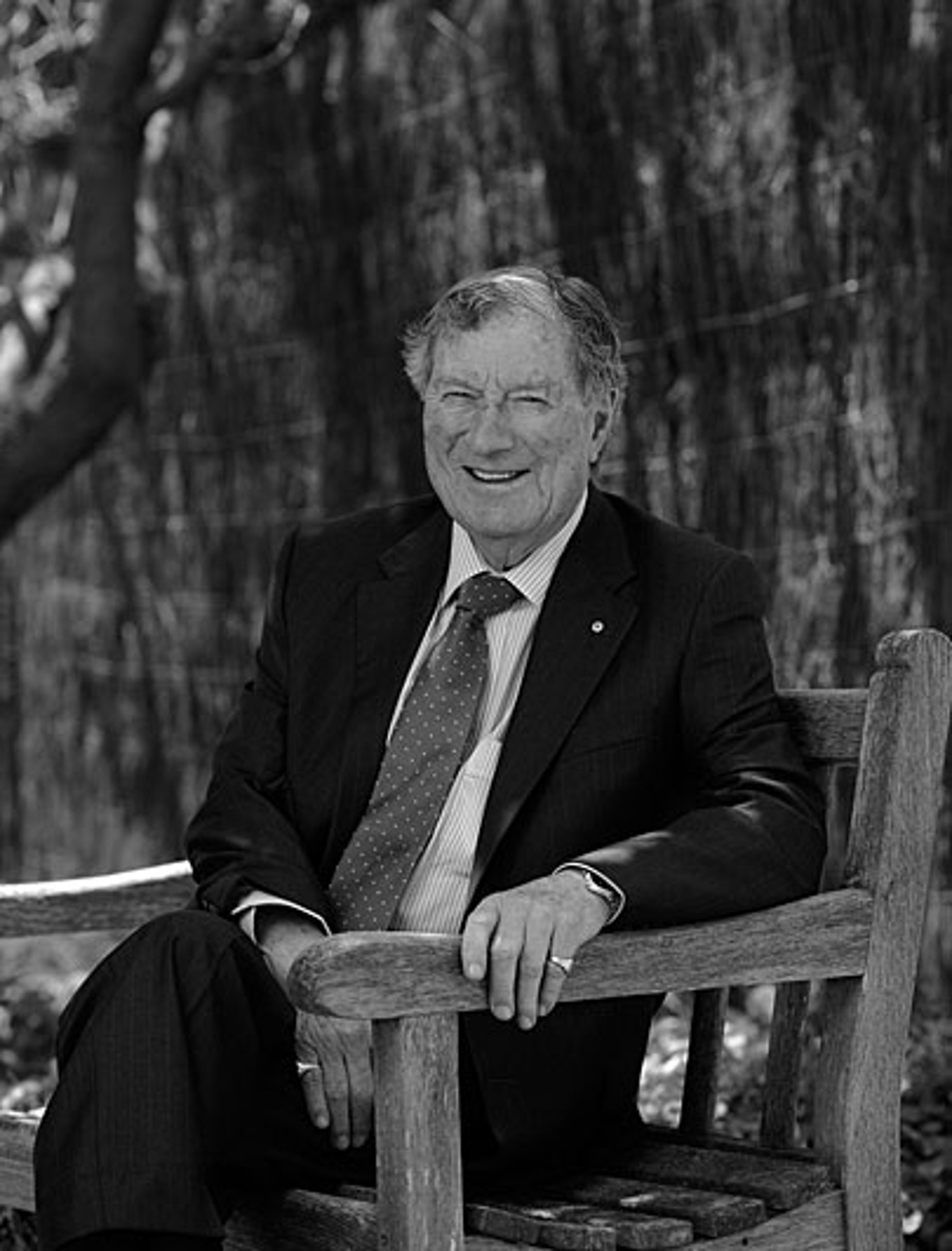By Peter Thomson
This is a new series on the 70th anniversary of Golf Digest commemorating the best literature we’ve ever published. Each entry includes an introduction that celebrates the author or puts in context the story.
Peter Thomson joined the Golf Digest staff as a contributing editor in 1986. At the time, I wrote in the editor’s letter: “Thomson is best known to America as a player, but internationally he is recognised as an architect, writer, administrator and statesman. He once ran for Parliament in his native Australia and was narrowly defeated. He is credited with founding the Far Eastern tournament circuit, ranging from India to Japan. He is unique in the sport, a reader of hardcover books, kind of an outdoor intellectual.”
After winning a tour event, it would be common to see him accept the trophy, then go into the press tent and roll a piece of paper into a typewriter carriage, and rap out a report on the final round as the golf correspondent to far-flung newspapers. He was the rarest of athletes who didn’t just talk his stories into a tape recorder to be cleaned up by a ghostwriter; like Bobby Jones, Thomson laboured over his own syntax. Trying to entice the five-time British Open champion to write a column for Golf Digest, I invited him to our offices in Connecticut, and we went to lunch down the road on this beautiful fall day at a typical New England restaurant called the Red Barn. In a private, wood-panelled room, we had an animated discussion about a wide range of potential topics.
What clinched it for me was one sentence. I asked his opinion of Jack Nicklaus’ design work. Jack was the No. 1 architect at the time with Pete Dye 1a, and their influence reshaped modern architecture worldwide. “Nicklaus courses,” Thomson said, parsing his words, “are like Jack himself—grim and humourless, with sharp edges.” Even if you didn’t agree with his assessment, you had to recognise the mind of a columnist who would stir and shake our readers.
Following is the first column he wrote for Golf Digest, in February 1987. It refers to a statement made by Jack Renner, who played the PGA Tour from 1977-’88. Known for exceptionally straight driving, Renner had his most historic moment come in the scorer’s tent leading the 1983 Sony Open in Hawaii by a shot over Isao Aoki, who proceeded to hole out his 120-yard wedge on the last hole for an eagle to win. Renner’s good humour at the time demonstrated a sense of perspective for the game that endeared him to Thomson. Jack, now 63, lives in San Diego. Peter continued to travel the world, design courses and offer incisive commentary until his death at age 88 in 2018— Jerry Tarde
You don’t have to be a weatherman to notice a change in the climate. Just read Jack Renner’s quote about the U.S. Open course at Shinnecock Hills last year.
“I’ll tell you what’s great about Shinnecock,” he said. “No railroad ties and no greens in the middle of lakes. There are choices here, options. The modern golf course removes strategy and options from the game of golf. It’s a defensive game. You just try to keep away from trouble. Here there are three or four ways to play most holes.”

Peter Thomson, 82, five-time British Open champion
(Photo by J.D. Cuban)
Does this mean what I think it does? Have railroad ties and greens in lakes had their day? Passed out of fashion like Bermuda shorts and fins on Cadillacs? Are the cold, grey skies of depressing winter giving way to warmer days of celebration and good fun? I, for one, hope so.
The truth is, the TPC at Sawgrass and courses of that ilk are hell to play. Such courses were designed and built for the amusement of spectators, not for the pleasure of playing. They were born in commercialism as part of Commissioner Deane Beman’s bold plan to make the PGA Tour self-sufficient by the staging of tour events in its own stadiums. Built into these arenas are the features that make for colourful television—the horror stretches of water and wilderness, railroad ties and savage sawgrass, areas within it might be hoped a front-runner will come to grief to the sniggers of the multitudes watching from the high mounds. The mixture of these patterns makes for the photogenic aspect that magazines and calendars lap up, the reflection of green grass and trees in calm, blue water. (Out West you can even have snowcapped mountains mirrored in the hazards.) It sells a load of real estate but has little to do with golf and, more often than not, gets in the way.
What we are seeing in these courses are not practical innovations, but distortions of dimensions—not works of art but caricatures.
The whole sorry business stems on the one hand from the silly attempt to keep winning scores up at around par for four rounds, about 288. Winning scores in the early 1900s were near the 300 mark, but they steadily declined with the advancement in clubs and balls and the tremendous improvement in course maintenance.

To Thomson, TPC Sawgrass represented golf courses built for TV viewers instead of golfers. A contrast would be Royal Melbourne (above) in his native Australia. (Photo by Carlos Amoedo).
Winners of major championships, in this day and age, should crack the 270 mark, but for some nonsensical reason the game’s authorities decided that scores should hold at the par mark. To counter low scores came the mucking about with the course, distorting its length and width, and the conversion of nonhazard areas into “penalty zones.” The result of this misguided policy is the present-day competition for the most outrageous and bizarre.
On the other hand is the modern axiom that a golf course will sell real estate, and that the more notorious the course, the higher the surrounding land prices. The trick for the developer, as devised through his architect, is to build something that is photogenically stunning, however impractical, extravagant or absurd. Never mind the golfer, that most gullible of all citizens. “Just get us into the colour magazines” seems to be the working theory.
The effect of this kind of marketing is to lead the game of golf down the garden path. By pounding out the message endlessly that golf is a gambit of tortures, and that it is somehow plebeian to play an entire round of golf with one ball, commercialism is doing a great harm to a noble sport.
These trends have been raging now for two decades or more. The consumer has had precious little say in the matter. The free market has not been in effect, he has been caught up in a mad competition of propaganda.
Yet there is a ray of hope. There are signs of a change of season as a few brave professionals like Jack Renner are beginning to speak their minds. But the little man should be heard from, too. Not the land speculator or investor, but the golfer who loves the game.
As for me, when I first took to journalism, my kind but stern mentor laid down the principle that if grandmother couldn’t understand what I was writing about, it was a lousy piece of composition. If my grandma can’t play it, it has to be a lousy course.









